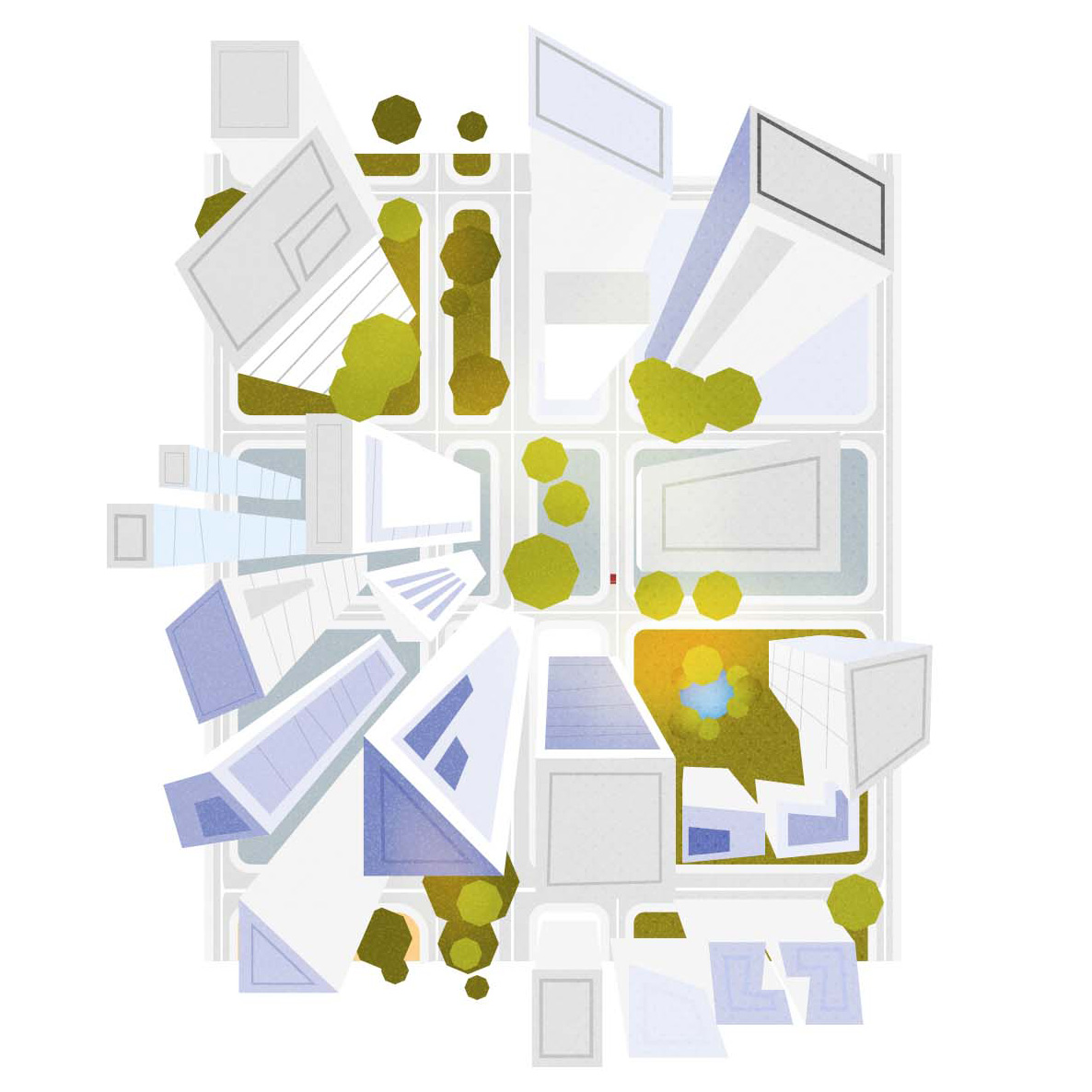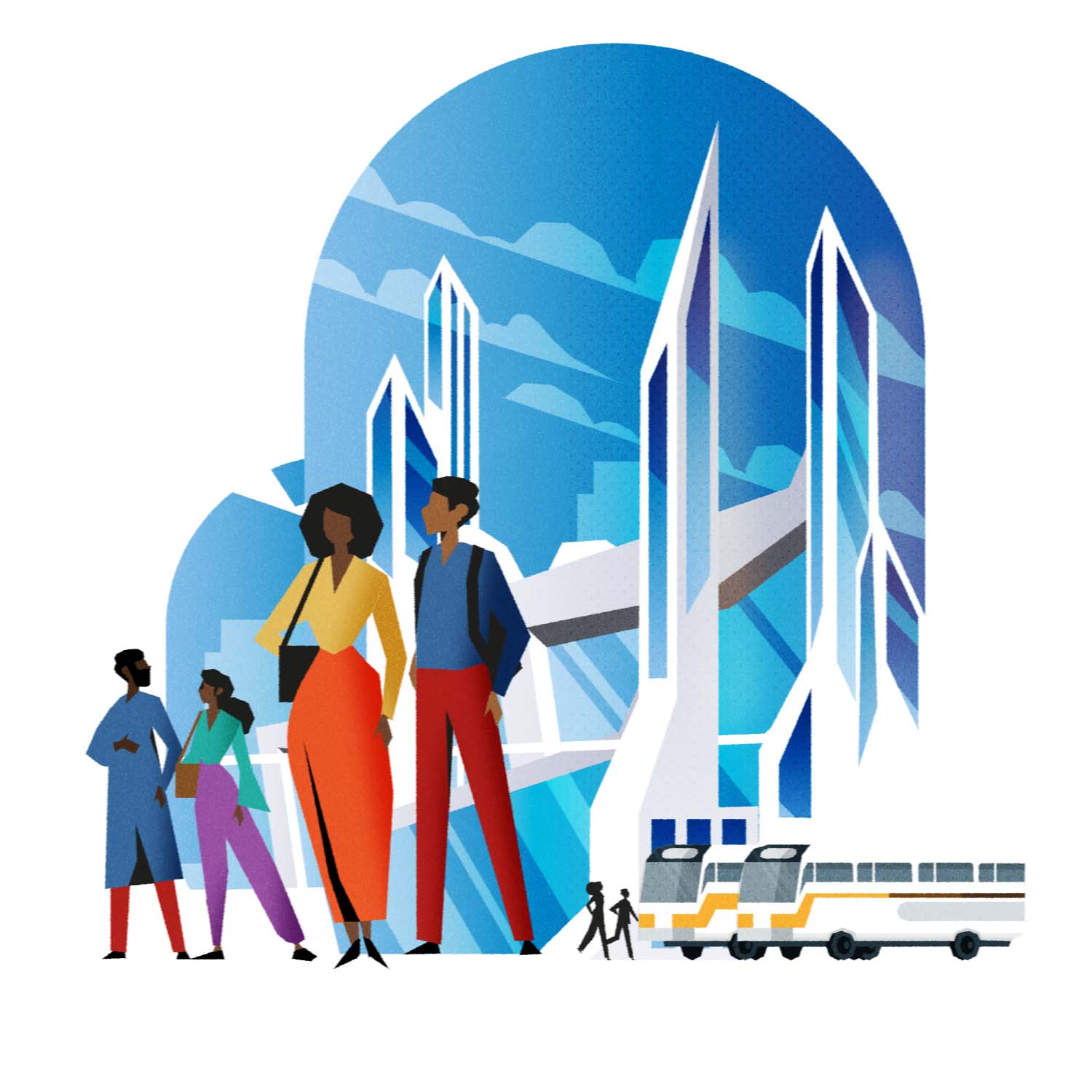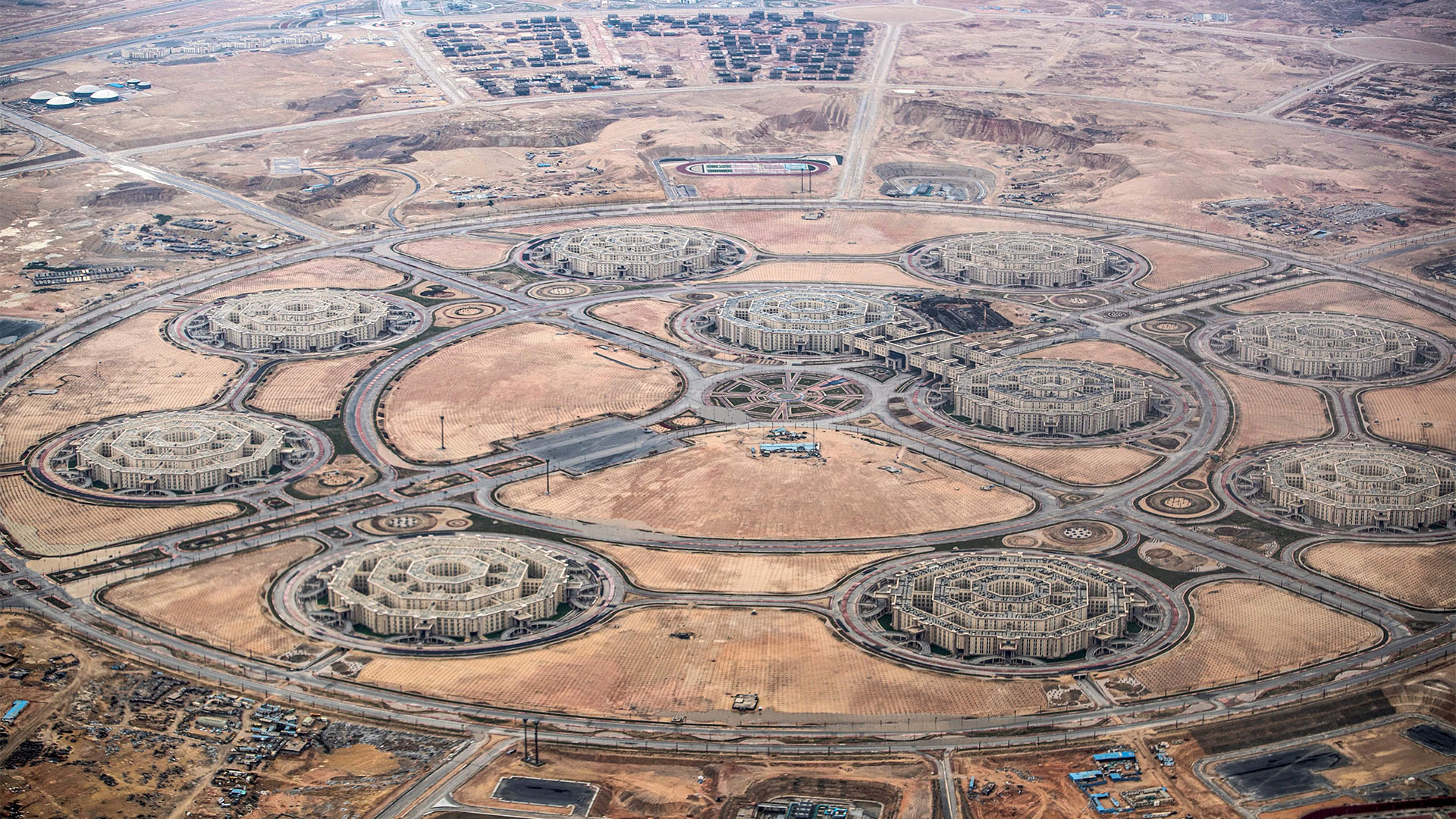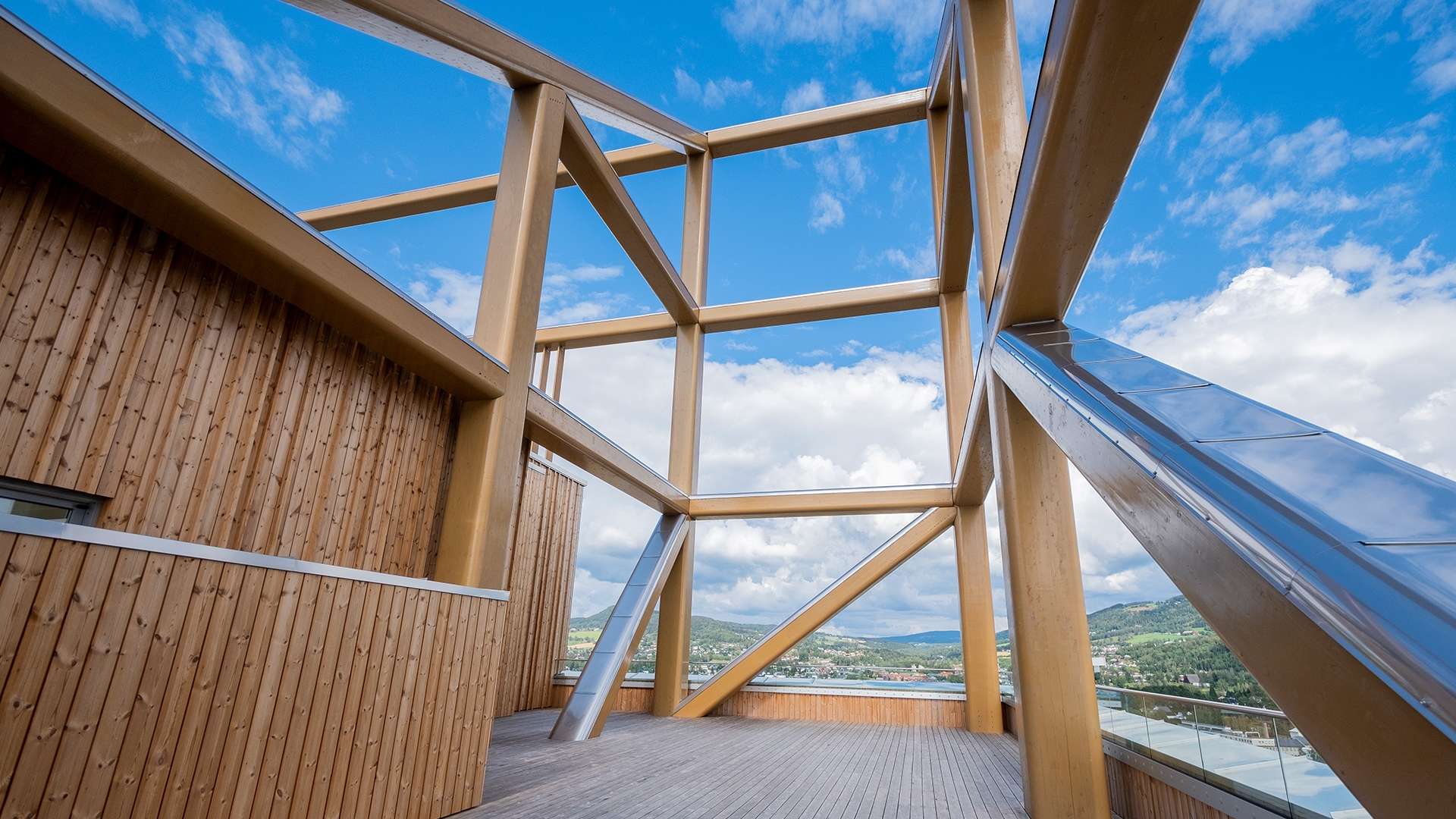
Illustrations by Ann-Sophie De Steur
This year will mark a new chapter in Egypt’s long history, as the first government employees start moving into the New Administrative Capital (NAC), 45km east of Cairo.
After nearly seven years of building, NAC, with its Iconic Tower (Africa’s tallest building) is one of 20 new cities peppering Egypt that are set to be home to 30m people over the coming decades.
The building frenzy, part of the Egypt Vision 2030 economic development plan, is being mirrored across the African continent, in countries like Nigeria, Tanzania, Kenya, Ghana, Equatorial Guinea and Sierra Leone. Old and inferior infrastructure, coupled with chronic overcrowding, means cities are groaning under the weight of a continental population set to nearly double by 2050.
“Africa’s future is inexorably linked to its cities, both in terms of economic performance and social wellbeing,” stated RICS’ 2021 report Superstar Cities of Africa. It highlighted an urgent need for physical infrastructure, supported by land reform.
This need for space has unleashed a flood of interest from global private developers and investors. Last year, an estimated $97bn of foreign direct investment (FDI) was pumped into Africa, compared with $39bn in 2020, according to the United Nations Conference on Trade and Development’s Investment Trend Monitor.
Attracting investment isn’t without its own problems, including navigating local politics, securing land, funding, and establishing building infrastructure. There is also the challenge of winning the support of locals to build lean, green and clean smart cities in a continent of two halves: the more economically advanced North Africa, and the emerging sub-Saharan.
A fresh start
The precedent for building new cities from the ground up can be found in the 1970s when Abuja in Nigeria, Yamoussoukro in Côte d’Ivoire, Dodoma in Tanzania and Lilongwe in Malawi were created. Their old colonial capitals, usually on the coast, were deemed unfit for national unity, and were plagued by old infrastructure that was segregated or inadequate.
“There was a strong temptation to flee these legacies and start from scratch,” says Julia Gallagher, professor of African Politics, Department of Politics, and International Studies at SOAS University of London.
“Today the focus is on escaping urban mess, poverty, overcrowding, crumbling infrastructure and services and poor governance. They are usually couched in terms of high-tech havens that will provide the space and resources to liberate entrepreneurship and encourage development.”
With a population predicted to leap from 1.34bn people in 2020 to nearly 2.5bn by 2050, new developments are imperative, particularly in Nigeria, Ethiopia, and Egypt – some of the most populous countries.
Corruption, lack of funds or a disbelief the development is going to happen hampers some governments, mainly in sub-Saharan Africa. In these instances, private developers have taken the lead on construction. “You can have private/government partnerships, but it’s the private developers driving it,” says Nick Langford, former country head of Ghana and Nairobi from 2015-19 with Rendeavour, one of Africa’s largest private developers (and now director of FRISIA Real Estate).
Governments help by creating Special Economic Zones, giving tax breaks, and assigning land rights, crucial in preventing uncertainties for investors. “You can have a perfect plan for a project, but it may never see completion if it becomes mired in a land dispute,” says Sean Ellison, research manager for New South Wales at Cushman & Wakefield.
Once leases are signed, Langford says the developer must secure the land by building, fencing it, or employing locals. “An important part of creating African cities is getting the local population on side,” he says, adding that if nothing is done with the land, “people will come and build a house or factory on it.”
Constructing cities doesn’t come cheap
“If thought of as a single entity, a city is the most technically complex instrument we've ever built. They're expensive – some cities' residential property markets alone are worth more than $1tr,” says city strategist Peter Griffiths.
Money making begins with land sales for residential, factories, and schools, hence the importance of securing the lease. Revenue is then ploughed into the development, which in turn funds the building of infrastructure, including water and electricity providers (both of which can also make money) and the roads.
Electricity is the easiest part, says Langford, who worked on Rendeavour’s Tatu City, Kenya, and Appolonia City, Ghana. “You can make it through solar, buy it off the grid, do a deal and sell it for a profit. There are a lot of funds who will buy it with the right to receive the income. It’s not a big funding issue.”
Water is more of an issue, says Langford. “Wells can give a finite amount of water, or you can pipe from a dam 20km away, and again make money. You buy it, make it, store it, sell it, and recycle it. And it addresses some of the environmental issues because it’s a scarce resource.”
Roads are not money spinners, however. Quite the opposite. “Build a road, and you are immediately adding value to the adjoining land. But you have got to invest in that infrastructure up front, and that’s the big cost, one you can’t compromise on. It has to be the best.”
And the best is a basic $1m per km. “It’s probably more in some cases if you build a proper road with base levels, drainage, bike lanes, lighting, street furniture. That must increase the land value.
“You then get the government to build the road to the front door of the new city with the government paying for it,” says Langford.
Infrastructure is also needed to help move materials to sites and to thwart transportation costs. However, Ellison says: “The cost of imported materials is pushed higher because of Africa’s lack of integration in global supply chains and tariffs – few countries on the continent have robust trade agreements overseas.” On developments like Tatu City, most materials are sourced locally, where possible – a plus for the green credentials of the new schemes.

“Africa’s future is inexorably linked to its cities, both in terms of economic performance and social wellbeing” RICS’ 2021 report Superstar Cities of Africa
Valuation of new cities
Land valuation starts at preliminary stage of the development. “This informs the feasibility study, and shareholding for JVA,” says Vivian Ombwayo MRICS, director of research and valuation at Broll Kenya.
Most developers prefer to have a few pre-leases/pre-sales before finalising the project. “The revenue generated this way is injected back into the project as capital,” says Ombwayo.
Some senior debt financers require a given percentage of the project to be pre-leased/pre-sold to reduce their exposure to development risk. Ombwayo says this also helps the developer check the target markets’ response on the offered product, allowing for improvements to the final product.
Once buildings are completed, “everything would need valuing if it was developed with debt, but the lack of comparables would make valuations more difficult,” says David Harper FRICS, head of property services at Hotels Partner Africa.
In this case, the closest comparables would be used and adjusted. “If an office block let to Shell was worth 8% in Cairo, a similar office block let to Shell in the new city would be worth 8% plus a margin on top depending on the added risk,” says Harper.
In some cases, no adjustment is needed as the extra risk of an unproven destination might be more than matched by a better property, or a better environment.
“In Africa there is rarely much directly comparable evidence, so most valuers are quite used to making adjustments,” adds Harper.
Green options aren’t straightforward
Being environmentally friendly is critical but in many developing countries, extremely difficult. Without an improvement in social conditions there will be little buy-in for green interventions, says Francois Viruly FRICS, associate professor, department of construction economics and management at the University of Cape Town.
In emerging countries, it is not enough to just place solar panels on buildings to secure high green ratings, says Viruly, adding that the focus should be on impact and meeting the UN-Habitat Sustainable Development Goals (SDG), central to which is achieving sustainable cities.
He says: “Professionals in the built environment have a critical role to play in ensuring that developments meet the needs of a broad group of stakeholders including local communities. It also means promoting developments that rejuvenate the existing built environment.”
An uncomfortable moral dilemma that exists around the new metropolises is the issue of who they are aimed at. “These cities are designed to get rid of squalor, but in effect what they are likely to do is to leave it behind, drawing more affluent people away from the old cities,” says Gallagher.
There is little to suggest the development and revenues driven by these new enclaves will improve life more widely, she says, adding: “It seems most likely that, if they succeed, the cities will increase social fracture and inequality.”
Highlighting the vast numbers of people and families on subsistence living, Langford says: “You cannot cater for those people in any shape or form. That is not your responsibility. You’ve made infrastructure in a city like Tatu City and invested the money in the people, the planning, the protection, the security, so you must sell land for a certain price. The developer cannot provide the 10,000sqm unit for rent at $100 a month. It doesn’t work.”
The lowest property price that would work, says Langford, is around $40,000 - $50,000 for a basic two-bed apartment, costing about $300 a month rent. To afford that, the resident would need to earn a yearly wage of $15,000. Added to the cost is the ongoing service charges to look after the infrastructure. For Rendeavour, this is usually calculated based on a formula of what services cost.
“It’s not that you don’t want to provide support for those less well-off, you just can’t,” Langford says. “It doesn’t work. Anybody who says otherwise is lying. That’s your base level, then you can have private living areas where you get your big profits.”

“The focus is the idea of escaping urban mess, poverty, overcrowding, crumbling infrastructure and services and poor governance” Julia Gallagher, SOAS University of London
Cities are continually evolving
Countries face many hurdles building a future for their citizens and getting there may not always be a smooth journey. But governments, with the developers and investors, are striving to fulfil promises made for better lives with their developments being works in progress.
“Cities are never finished,” says Griffiths. “In many cases, they are constantly refining their plans to meet changing needs and shifting approaches that draw inspiration from what has come before. “Even a rapidly conceived plan is part of an evolving urban tradition.” And the African continent is set to continue evolving for decades to come.
Three ambitious cities on the rise
Dozens of new cities are planned or in development in Africa. Here are three – one a dream on the cusp of becoming reality, another a slowly growing city, while the third will take its place as the major new metropolis in Egypt.
Sierra Leone – Peninsula City
The dream of Australian orchestral conductor, Geoffrey Simon, is to build a city in Sierra Leone that, he says, will “advance Sierra Leone. Not just up the value chain, but up the cultural chain, by providing opportunities, stimulus and an environment where Sierra Leoneans can become more expert at what they do through training facilities and work experience.”
Called Peninsula City, it will be located on a 640-acre ocean-fronting site just south of the country’s capital, Freetown, and developed as a joint venture between Peninsula Group and the government of Sierra Leone, represented by the Ministry of Tourism and Cultural Affairs.
Half the land was allocated to Peninsula City in mid-2021 by the government of Sierra Leone on the proviso that development and activity must be shown before the rest is given. Simon says: “Our mobilisation investors are fulfilling this proviso on the strength of the lease over this initial acreage, paving the way for the large-scale investment to come in as the full-sized project emerges.”

Egypt – New Administrative Capital
The country is on a mission over the coming decade to create 20 new cities for over 30m people to be built around Cairo, Giza, Dakahlia, Beheira, Port Said, Matrouh, North Sinai, Beni Suef, Minya, Assiut, Qena, Luxor and Aswan.
The most prominent is the New Administrative Capital. Located 45km from Cairo, it is hoped it will help relieve pressure on the current capital’s population, ease traffic problems, create jobs and attract foreign investment.
Highlighting just how much the developments are needed, Catesby Langer-Paget MRICS, head of the Egypt office at Savills Middle East, says; “The population of Egypt is 100m, and is growing by 2% every year. You could fill NAC in just three and a half years of growth.
“[But the NAC] should alleviate pressure. The prices in Old Cairo are dropping because people are moving out to new areas. In time, hopefully there will be a reduction in congestion in central areas.”
Kenya – Tatu City
Tatu City, a former coffee farm, is a 5,000-acre mixed-use project, constantly evolving since development began in early 2016. It includes residential homes, schools, nature areas, a sport and entertainment complex and manufacturing area that will eventually be home to over 250,000 residents.
As the country’s first operational Special Economic Zone, with zero-rated VAT, low corporate taxes, and exemptions in import duty, it is currently home to more than 60 businesses focused on light industrial parks.
Over 5,000 homes are completed or under construction with two schools – Crawford International and Nova Pioneer, already operational with 3,000 students. A road network is next to be finished so the city connects with the capital, Nairobi.
Preston Mendenhall, executive vice president at Rendeavour, says there has been a clamour for the modern industrial units, with companies keen to move out of dilapidated premises in Nairobi. “We’ve had to change the masterplan significantly over the last five years to meet the demand,” he says.
“We started with 50 acres of light industrial land. But when we saw the need for the product we could provide, it increased to 450 acres, which is 90% sold. Then we added another 450 acres. In six years, we have gone from 50 acres to 900 acres of industrial land.”


